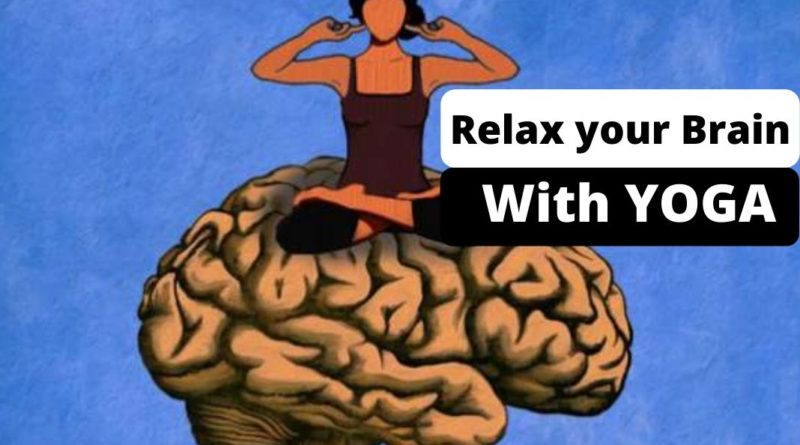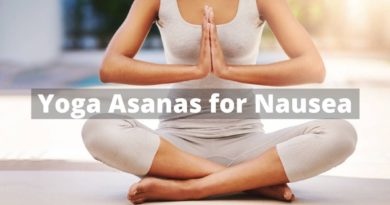Yoga Sequence to Train Your Brain to Relax
Is yoga useful for relaxation? Are there yoga routines to activate the body? In this article, we will see how it is possible to activate or relax the body by practicing yoga. If someone were to ask me what is the main advantage of practicing yoga, even if it was difficult to say only one, I would probably say that its power to relax the body and mind, beyond the physical benefits that we can obtain from its practice, especially at the level back and muscle elasticity, the state of relaxation and well-being that we achieve after practicing it is one of the strong points when deciding to practice yoga.
Yoga is the antithesis of what the modern world demands of us these days: noise, speed, the “here and now”, consuming quickly or the search for constant novelty. For correct yoga practice, we need silence, concentration, stillness, patience and above all time to do it well. The benefits that we will obtain from the practice of yoga are not immediate, we need months to re-educate our body and sometimes a little more to reach the necessary concentration that will make us enjoy each posture and sequence.
When we practice, our mind should focus only on our body and the posture we are performing. To achieve this concentration, we will use breathing as a tool to help us free ourselves from any thought. Depending on each posture or other factors such as the time we stay in it, the order and speed that we imprint in the passage from one to another, our body will be activated or relaxed to a greater or lesser extent. But whether our yoga session is oriented towards activation or relaxation, in both cases we will be able to break with the previous state with which we started the practice. This break is what makes yoga a perfect activity for those with anxiety or stress. Although in the first sessions they are “rare” in the face of so much calm and their mind cannot relax, with continued practice, this continued exercise of concentration will make them break more and more with the state of anxiety or stress that they brought to the beginning of the session.
Yoga is not a miraculous activity in this regard, but silence, concentration on our breathing together with the physical effort necessary to perform each posture provides a clear benefit: for a few minutes, take a breath from the outside and prioritize our body and mind.
From La Bolsa del Corredor we have created two sequences of yoga poses as an example of everything discussed above. Two yoga sequences with totally different objectives, one of them designed to help our body and mind to relax and the other in which activation is promoted, ideal for performing it in the early morning or before going for a run. Before starting with these sequences you can read the article we wrote about common mistakes when practicing yoga to avoid them during the execution of these two sequences.
Yoga sequence to activate our body
We all know that starting the day with exercise greatly changes the perspective of everything that lies ahead. Activating the body, without reaching exhaustion, leaves us more prepared to face physically and mentally the rest of the day. The disadvantage is that most of the time we can be lazy to get up early or we do not have enough time to go out for a 30-minute run, go to a gym or swim in a pool.
Taking into account the time constraints, we have prepared a yoga sequence with which we intend to awaken most of our body by introducing postures such as adho mukha svanasana (downward-facing dog pose), the Warrior I pose or Utkatasana (Chair Pose) ). All of them with the intention of involving the activation of as many muscle groups as possible: shoulders, back, quadriceps, hamstrings, lumbar, etc.
The first and second blocks should help us to awaken the muscles of our back and legs, so if this sequence is carried out as soon as we wake up, we must not force ourselves under any circumstances, reaching the position of adho mukha svanasana (dog mouth pose bottom) with the legs slightly flexed. The purpose of the sequence is to activate the body, not to force it.
The center block will be repeated by changing the leg from the posture framed in the red box. In this position, we will try to distribute the weight more on the lower extremities, so that the hands do not support almost weight while keeping the back as straight as possible. From this posture, we will raise the body, without losing balance, until we reach the posture of warrior that we will maintain for three broad breaths. In the second part of this central block, from adho mukha svanasana we will lift the ankles in our inhalation and then descend to Chaturanga Dandasana on the next exhalation, from here, supporting the knees we will raise our trunk to the cobra or Bhujangasana position at the same time as we inhale.
This sequence can be done in the morning before the shower or as a form of warm-up before doing another more intense activity.
Yoga sequence to relax (body and mind)
One of the most common problems that the busy world in which we live tends to bring is the difficulty of falling asleep, something that we often try to remedy by taking pills (natural or not). Working late, staying too many hours with your eyes fixed on a computer or mobile screen, excess caffeinated drinks and many other factors make us arrive at bedtime very tired but with our minds still active. For those who run at night activates us too much, a yoga routine that can be very useful to get us to break with the daily hustle and, even with physical effort, manage to relax.
In the following yoga sequence, we have incorporated easy-to-perform postures, giving more importance to breathing than to the physical part of yoga. The sequence starts from the easy pose or Sukhasana. The first three blocks of postures can be done with the eyes closed, in a way that helps us focus only on our breathing.
The first part of the third block will help us to alleviate the possible blockages that we have in the back by repeating two basic yoga postures: Bidalasana (Cat pose) and Marjaryasana (Cow pose). As we inhale, our back will curve towards the ground (Marjaryasana) and when we exhale, we will arch our back, directing it towards the ceiling (Bidalasana), repeating each step five times.
Once we stand up, in the fourth and fifth blocks of the sequence, the transition between postures should be smooth and the breath becomes the center of the entire sequence. In the central part of the fourth block, where we do 5 repetitions with the legs open and the hands-on the waist, the back must go down and go up completely straight, and when going down it must be parallel to the floor, with our gaze towards the floor and the neck elongate. At the end of the sequence, we will have to take three deep breaths that will help us maintain the relaxation that we have been working on throughout practice.
We hope you liked both sequences and, as always, if you have any questions or suggestions you can raise them in the comments.




